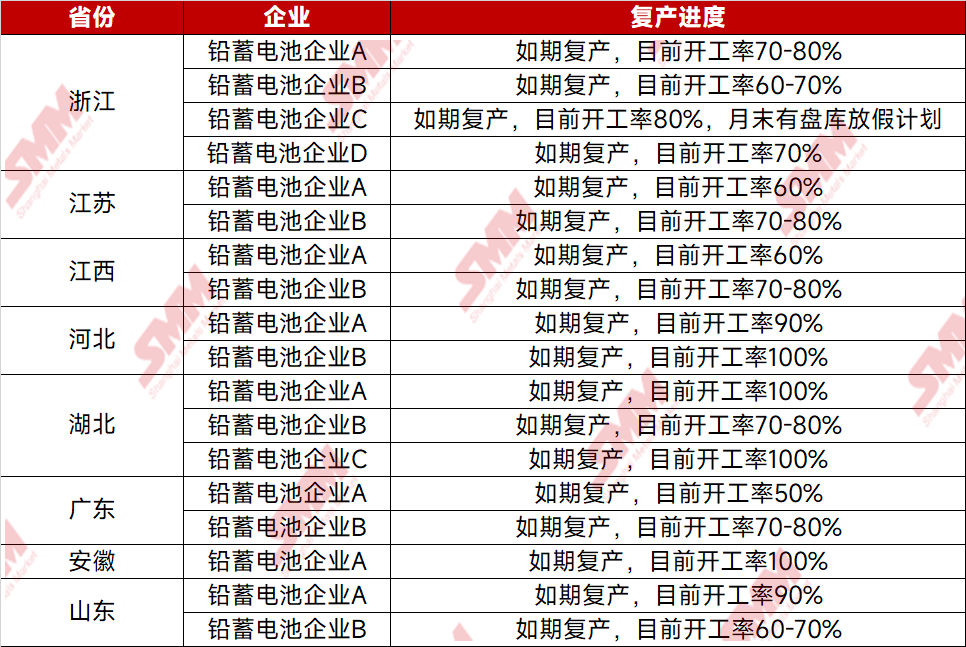






SMM February 21 News: After the Chinese New Year holiday, it has been the third week, and all major lead-acid battery enterprises have resumed normal production. As the largest lead consumption sector, how is the post-holiday consumption in the lead-acid battery end-use market, and what is the operating rate of production lines after producers resumed work?
According to SMM, except for a very few lead-acid battery enterprises that did not take a holiday during the Chinese New Year or only took 2-3 days off, the earliest batch of enterprises resumed work on January 30-31, while others gradually resumed work after February 1, with the majority starting between February 3-7. In the initial stage of resumption, due to the absence of non-local workers and considering the differences in orders among various battery enterprises, the operating rate in the first week was mostly 20-30%, gradually recovering to 50-60% in the second week, and reaching 60-80% in the third week, with a small portion achieving full capacity.

From the perspective of actual end-use consumption, in the post-holiday e-bike and automotive battery markets, although dealers engaged in a brief period of post-holiday routine restocking, the restocking volume for batteries was lower than in previous years, and procurement was relatively scattered, leading to limited improvement in producers' orders. Meanwhile, after the Chinese New Year, lead prices have remained at high levels, and according to traditional seasonal consumption patterns, the lead-acid battery replacement market will enter the off-season after March. Therefore, producers are more inclined to produce based on sales to reduce the risk of finished product inventory accumulation. Additionally, the current ESS battery market is relatively strong, including new tender orders for data centers, mobile base stations, and other applications, with some medium and large lead-acid battery enterprises already operating at full capacity.
For queries, please contact William Gu at williamgu@smm.cn
For more information on how to access our research reports, please email service.en@smm.cn